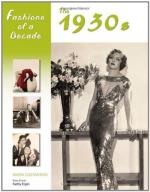|
This section contains 188 words (approx. 1 page at 300 words per page) |

|
The stock-market crash of 1929 complicated the temporary stagnation of the economy. Capital liquidity and investor confidence might have spurred the growth of new industries. After the crash, however, capital and confidence were in short supply. Both were undermined by poor economic practices and fiscal mismanagement in the 1920s. Large World War I debts combined with high tariffs made it impossible for Europe to trade its way out of debt with the United States and led to severe imbalances in international payments. Federal Reserve mismanagement of the gold supply and easy credit fueled speculation and undermined bank solvency. Unregulated stock practices and securities fraud drove stock prices far higher than the real worth of American corporations. Production increases in industry were not matched by higher wages, undermining consumer demand. The crash of 1929 reflected investor recognition of the economy's troubled condition. But their panicked sell-off only made matters worse...
|
This section contains 188 words (approx. 1 page at 300 words per page) |

|




